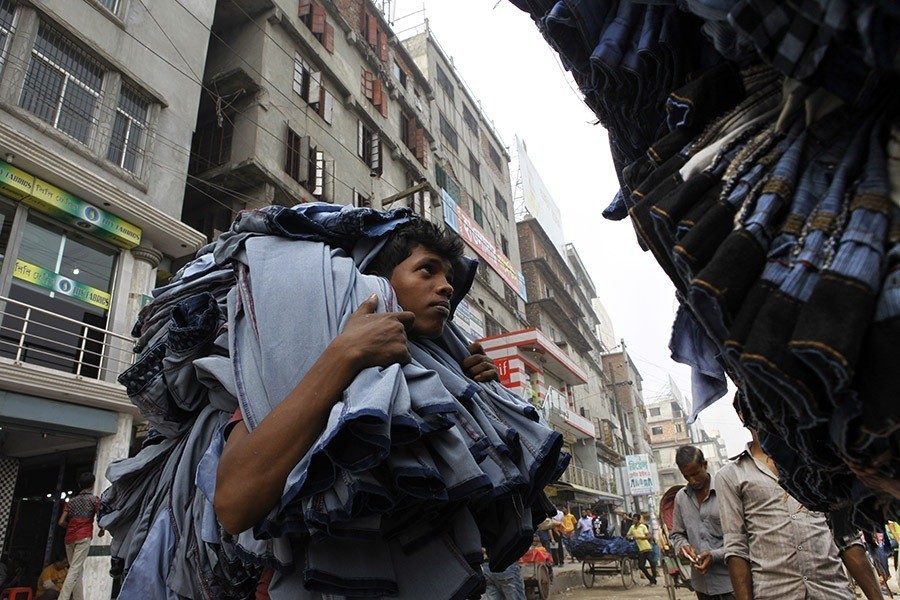
Published :
Updated :

The pressure of increased purchase orders is weighing on the readymade garments sector. With already a plateful on its hands, more are in the pipeline, according to industry observers. Some entrepreneurs estimate a 20 per cent increase in orders compared with what was registered at this point in time of the last fiscal year.
The uptrend in the placement of orders has been already having a bearing on export earning statistics up to a degree. In the coming months the earning spike will be more pronounced because generally on completion of the export process three -- four months will have elapsed before the foreign currency proceeds hit our tills.
According to the data of the Export Promotion Bureau, in January last apparel export worth $288 crore was recorded. In February and March the figures were US$ 260 and U$ 257 crores respectively, representing 16.86 per cent and 12.60 per cent growth in two months, let alone the higher figure in January. In April last, the earning at US$247 crore reflected a growth of 11.89 per cent. Thus the total growth in the first ten months of the on-going fiscal works out to 9.37 per cent.
It has to be noted that the purchase orders are offering on the whole a price reduction of 5-7 per cent as compared with last year's prices.
What are the possible reasons behind the stepped up purchase orders. At least four reasons are cited by garments professionals: First, Primark, VF, Inditext, Lee & Fang, along with other Brands and buying houses are expanding their business. Secondly, the economic situation in Europe is much better than in last year. Thirdly, several Brands in China are relocating a portion of their orders; Bangladesh may be beginning to benefit from the shift. Last but not least, many factories may have closed down after having run out of wherewithal in carrying out reform.
Although several industries feel the heat of spike in purchase orders, yet a rush of orders is experienced by the compliant factories. One important but risky feature is for the industry taking orders beyond their inherent capacity to cope; so that sub-contracting is being contemplated to flesh out the gaps in terms of squaring up with the orders.
The manufacturers and exporters will be bringing in business on an ancillary front; the increase in orders will put corresponding pressure on factories turning out thread, carton, poly bag, back-board, butterfly, hanger and other garments accessories. The backward linkages will have to be activated to keep the RMG sector up and running full steam ahead. One gap is underscored by Abdul Kader Khan, President of Bangladesh Garments Accessories and Packaging Manufaturers and Exporters Association (BGAPMA). The hike in the price of paper has been a handicap in the manufacture of cartons. Because the garment factory owners are not quite increasing the price at their end.
But the elephant in the room is the lower price-tag on offer which may hinder optimising the benefits of increased orders the RMG sector seems poised to be receiving. Even some factory owners tend to think that the lowering price may not even enable them to meet the cost price.
But it is paradoxical-if our products are competitive in quality, why shouldn't they fetch competitive prices? We believe we have some levers to pull with the buyers/importers in terms of the margin of profit factored in the equation that is weighted in favour of the brands at the expanse of exporters.
Somewhere something has to give in for the improvement of the industry of which the workers' safety and welfare are the key elements .
Finally, we must strive to improve port handling to deliver on the orders with adequate lead time having been retained through the preceding stages.


 For all latest news, follow The Financial Express Google News channel.
For all latest news, follow The Financial Express Google News channel.